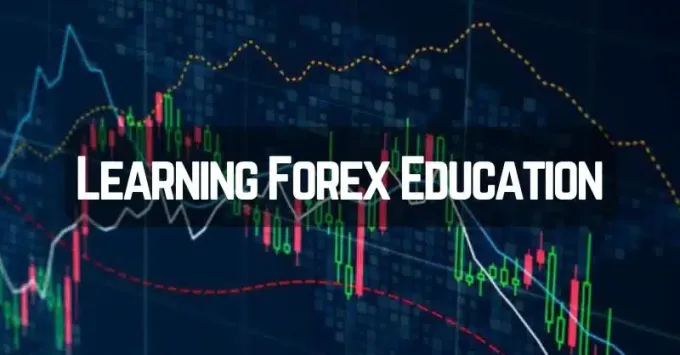Forex Trading Strategy and Education - TradingAccademy

Strong 8k brings an ultra-HD IPTV experience to your living room and your pocket.
Forex trading, or foreign exchange trading, involves the buying and selling currencies on the foreign exchange market. Understanding its fundamentals will give you a solid foundation to effectively start trading in the Forex market. If you want to learn more about Forex trading, visit TradingAccademy. It is a top website that offers Forex educational courses, trade signals, and more.
The Fundamentals of Forex Trading
Here are the fundamentals of Forex trading you need to understand:
Understanding the Forex Market:
The Forex market is the largest financial market in the world, open 24 hours a day, five days a week. It involves trading currency pairs such as EUR/USD or GBP/JPY. Key participants include central banks, commercial banks, financial institutions, corporations, hedge funds, and individual traders.
Currency Pairs:
In a currency pair, the first is the base currency, and the second is the quote currency. For example, in EUR/USD, EUR is the base currency, and USD is the quote currency. Major pairs involve the most traded currencies (e.g., EUR/USD, USD/JPY). Minor pairs do not include the USD (e.g., EUR/GBP). Exotic pairs involve a primary currency and a less-traded currency (e.g., USD/TRY).
Market Mechanics:
Bid and ask prices are two important mechanics of trading. The bid price is what buyers are willing to pay for a currency, and the asking price is what sellers are willing to accept. The difference between the bid and ask price is known as the spread. It represents the broker's profit. Moreover, pip is the most minor price move in a currency pair. For most pairs, one pip is 0.0001.
Order Types:
• Market Orders: Execute immediately at the current market price.
• Limit Orders: Execute at a specified price or better.
• Stop Orders: Execute once the market reaches a specified price.
Fundamental Analysis:
Fundamental analysis includes the following:
• Economic Indicators: Key indicators include GDP, employment figures, inflation rates, and interest rates.
• Central Bank Policies: Decisions on interest rates and monetary policy impact currency values.
• Political Events: Elections, geopolitical tensions, and other events can influence market movements.
Technical Analysis:
Technical analysis includes the following:
• Charts: Visual representations of price movements over time. Common types include line charts, bar charts, and candlestick charts.
• Indicators: Tools like Moving Averages, RSI (Relative Strength Index), and MACD (Moving Average Convergence Divergence) help predict future price movements.
• Support and Resistance Levels: Price points where a currency pair tends to stop and reverse.
Trading Strategies:
These are some trading strategies:
• Day Trading: Short-term trading involves holding positions for a day or less.
• Swing Trading: Medium-term trading consists of holding positions for several days to weeks.
• Position Trading: Long-term trading consists of holding positions for weeks, months, or even years.
Risk Management:
Risk management is essential in Forex trading. Here's how you can manage your risk:
• Leverage: Borrowing money to increase the size of a position. It can amplify gains but also losses.
• Stop-loss orders: Orders placed to sell a security when it reaches a specific price, limiting losses.
• Position Sizing: Determining the amount of capital to risk on each trade.
How to Start?
You can start Forex trading by following a series of steps that will prepare you to enter the market and begin trading effectively:
1. Choose a Reliable Forex Broker:
Make sure the broker is regulated by a reputable financial authority (e.g., FCA, SEC, ASIC). Choose a broker that offers a user-friendly trading platform with essential features like charting tools, indicators, and real-time data. Compare the fees, spreads, and commissions charged by different brokers. Look for brokers with reliable customer support available via multiple channels.
2. Open a Demo Account:
Use a demo account to practice trading with virtual money. This helps you understand the platform and test your strategies without risking real money. Treat the demo account as real to develop good trading habits and strategies.
3. Develop a Trading Plan:
Set clear, realistic trading goals and objectives. Determine your risk tolerance and set rules for risk management, including position sizing, stop-loss orders, and leverage use.
Develop and test trading strategies based on technical and fundamental analysis. Also, keep a trading journal to record your trades, strategies, and outcomes for continuous improvement.
4. Open a Live Trading Account:
Complete the account registration process with your chosen broker and verify your identity. Deposit the minimum required capital into your live trading account. Start with an amount you can afford to lose.
5. Start trading:
Start with small trades to manage risk and gain experience. Stick to your trading plan and avoid emotional trading decisions. Regularly review your trades and adjust your strategies based on your performance and market conditions.
Final Words
Jash has over six years of trading experience. He specializes in commodities and equities and has improved his skills in financial markets. Jash is proficient in various trading platforms and tools. A consistent track record of profitable trading outcomes marks his career. He wants to help beginners and experienced traders through TradingAccademy. This website is operating under the banner of Ghotraz Services.
Note: IndiBlogHub features both user-submitted and editorial content. We do not verify third-party contributions. Read our Disclaimer and Privacy Policyfor details.


